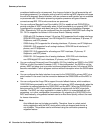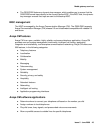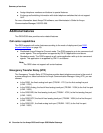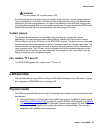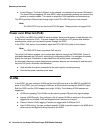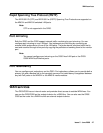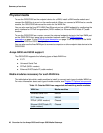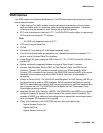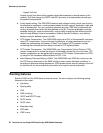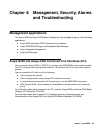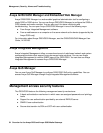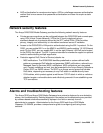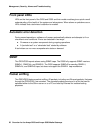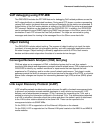
Summary of services
50 Overview for the Avaya G250 and Avaya G350 Media Gateways
- Egress QoS List
Access control lists define which packets should be forwarded or denied access to the
network. QoS lists change the DSCP and 802.1p priority of routed packets according to
the packet characteristics.
● Policy-based routing. The G250/G350 features policy-based routing, which uses a policy
list structure to implement a routing scheme based on traffic source, destination, type, and
other characteristics. You can use policy-based routing lists (PBR lists) to determine the
routing of packets that match the rules defined in the list. Common applications include
separate routing for voice and data traffic, routing traffic originating from different sets of
users through different Internet connections (Internet Service Providers), and defining
backup routes for defined classes of traffic.
● RTP Header Compression. The G250/G350 saves up to 60% of the bandwidth necessary
using RTP compression. It also enhances the efficiency of voice transmission over the
network by compressing the headers of Real Time Protocol (RTP) packets, thereby
minimizing the overhead and the delays involved in RTP implementation.
● TCP Header Compression. The G250/G350 uses Transmission Control Protocol (TCP)
header compression to reduce the amount of bandwidth needed for non-voice data. TCP
header compression can be applied either as part of RTP Header Compression via IPCH,
or using the Van Jacobson method defined in RFC 1144.
● Inter-Gateway Alternate Routing (IGAR). The G250/G350 uses IGAR as a means to use
the PSTN as an alternative to the WAN interface under certain definable conditions. In
providing an alternate routing mechanism, IGAR preserves the internal makeup of the call
so that the call can be successfully terminated to its original internal destination.
Routing features
Both the G250 and the G350 have an internal router. You can configure the following routing
features on the router:
● Interfaces
● Routing table
● VPN
● GRE tunneling
● DHCP and BOOTP relay
● DHCP server
● DHCP client
● Broadcast relay
● ARP table
● ICMP errors



